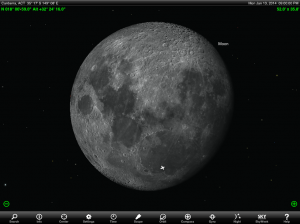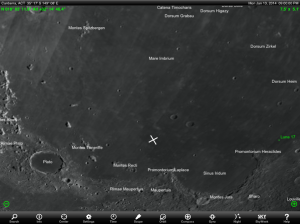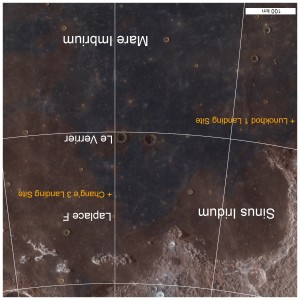13 January 2014 While both China’s Chang’e 3 lunar lander and Yutu lunar rover are too small to be seen from Earth though even a large telescope, you can use any size telescope to at least look at the part of the Moon (Mare Imbrium or Sea of Rains) where they both landed on December 15 2013.

The small white cross on the above chart shows the approximate location of the landing site of both craft.

The above chart shows a closeup view of Mare Imbrium (Sea of Rains) with a white cross again marking the approximate location of Chang’e 3 and Yutu’s landing site.

Image Credit: NASA/GSFC/Arizona State University
And before anyone emails me, I know I have turned the above image upside down so that the view is correct for the Southern hemisphere. Thanks to the Lunar Reconnaissance Orbiter website for this final chart where they have also posted a number of images showing both craft on the surface of the Moon taken from the Lunar Reconnaissance Orbiter.
Finally, a number of high resolution images have been released for the first time taken by cameras on both craft. They can be found in a number of places on the Internet including here (links to a Northern hemisphere website where the star charts are ‘upside down’ and therefore mostly not relevant for the Southern hemisphere).